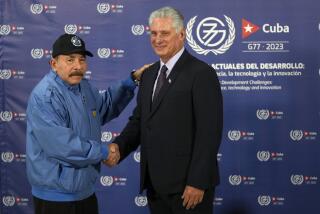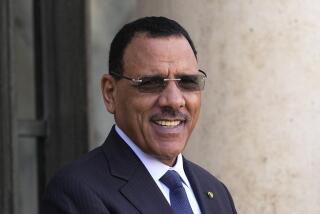U.S. Intervention in Latin America
Ernest ConineŌĆÖs condemnation of the Sandinista military buildup (Editorial Pages, Aug. 18) suggests a profound ignorance of the history of U.S. intervention in Latin America and specifically in Nicaragua.
This intervention has affected both revolutionary and democratically elected governments, and includes the overthrow of the Arbenz government in Guatemala in 1954, the Bay of Pigs invasion of Cuba in 1961, and the destabilization of the Allende government in Chile prior to the coup of 1973.
In 1909 the United States assisted in the overthrow of the Zelaya government in Nicaragua, and U.S. Marines subsequently occupied Nicaragua for more than 20 years between 1912 and 1933. In 1936, the head of the U.S.-trained National Guard, Anastasio Somoza Garcia, usurped power and the United States supported the Somoza family and the National Guard through 42 years of fraudulent elections, corruption and increasing brutality.
It was not until a few months before the victory of the Sandinistas forces, when all organized sectors of the population had turned against the Somoza government, that the U.S. government finally withdrew support.
To assume that an aid offer from the Carter Administration could erase more than 70 years of history is to attribute to the Sandinistas a naivete that no modern government can afford. Even before the election of Ronald Reagan in 1980 the Republican Party platform promised support for the opposition in Nicaragua. The Sandinistas sought military aid for self-defense, as well as economic and technical aid, from whatever country was willing to give it, including countries of Western Europe and Latin America as well as the Soviet Union.
Unfortunately, their requests for military aid and their suspicions of the U.S. government have proved all too justified. Contra attacks against Nicaragua began within months of the revolutionary victory, and covert U.S. aid to the contras began in December 1981, (and not after 1982 as Conine suggests). The Reagan Administration--now with the assistance of Congress--is adding another bloody chapter to the tragic history of U.S. military intervention in Latin America.
NORA HAMILTON
Los Angeles
More to Read
Sign up for Essential California
The most important California stories and recommendations in your inbox every morning.
You may occasionally receive promotional content from the Los Angeles Times.










